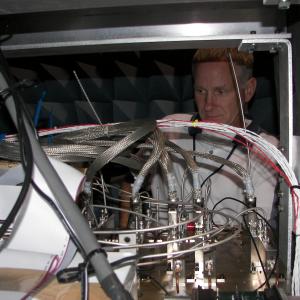Hurricane Imaging Radiometer (HIRAD)
Status
HIRAD is a multi-frequency, hurricane imaging, interferometric single-pol passive C-band radiometer, operating from 4 GHz to 7 GHz, with both cross-track and along-track resolution that measures strong ocean surface winds through heavy rain from an aircraft or space-based platform. A one-dimensional thinned synthetic aperture array antenna is used to obtain wide-swath measurements with multiple simultaneous beams in a push-broom configuration. HIRAD features software beam forming with no moving parts, internal hot, cold, and noise diode based calibration, and continuous, gap-free imaging. Its swath width is approximately 60 degrees in either direction. There are two products: rain rate and wind speed.
The basis of the HIRAD design is the Stepped Frequency Microwave Radiometer (SFMR) that has successfully measured surface wind speed and rain rate in hurricanes from the NOAA Hurricane Research Division’s (HRD) P-3 aircraft. Unlike the SFMR that views only at nadir, the HIRAD provides wide-swath measurements between ± 40 degrees in incidence angle with a spot-beam spatial resolution of approximately 1-3 km. HIRAD would be able to provide high resolution hurricane imaging when used on an operational hurricane surveillance aircraft such as the NOAA HRD’s Gulfstream-IV.

